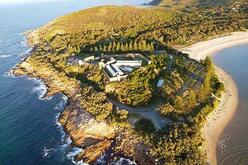
The Australian Energy Council and Energy Networks Australia have issued a fact sheet on the potential impacts of extended hot weather on the energy system following the release of the Australian Energy Market Operator’s (AEMO) Summer Readiness Plan.
The ³Ô¹ÏÍøÕ¾ Electricity Market will be under pressure to deliver reliable power during summer in situations where supply is tight and demand is high. Electricity generators and network businesses developed the fact sheet to explain how the industry works to deliver reliability during these extreme weather periods.
Energy Networks Australia CEO, Andrew Dillon and Australian Energy Council Chief Executive, Sarah McNamara, said the industry had been doing everything it could to ensure power supply could be maintained during the hot summer months.
Power station operators and transmission and distribution businesses have been undertaking plant and system maintenance in the lead-up to summer.
The AEC’s Chief Executive Sarah McNamara said: “Individual power station generation units can and do have unplanned outages from time to time as we have seen this year. But this is normal, not just for large plants here in Australia, but also overseas. Power systems have back-up capacity, which is designed to manage a limited number of individual outages.”
Historically, electricity demand has been highest on hot weekdays when business and industry are fully operating.
“The biggest risk occurs with very high demand. Usually that is at the end of a run of two or more extremely hot days. Buildings are already hot, there may be low output from wind generation and solar PV output declines late in the afternoon,” Ms McNamara said.
“Losing power even for short periods during a heatwave can cause real inconvenience. But electricity providers will continue to do everything possible to avoid that occurring. We are working with AEMO to have sufficient supply available for the hotter periods.”
Energy Networks Australia CEO Andrew Dillon said networks take all possible steps to keep the lights on during summer.
“Outages can occur for a number of reasons when temperatures hit extremes and networks respond as quickly as possible to restore power,” Mr Dillon said.
Extreme weather, such as fire, strong winds or storms can damage network infrastructure.
When there is not enough electricity being supplied, AEMO may also direct networks to cut power to customers, this is known as load shedding.
When directed to load shed by AEMO, networks take all possible steps to minimise this disruption, keep critical infrastructure such as hospitals and public transport online and restore power as quickly as possible.








